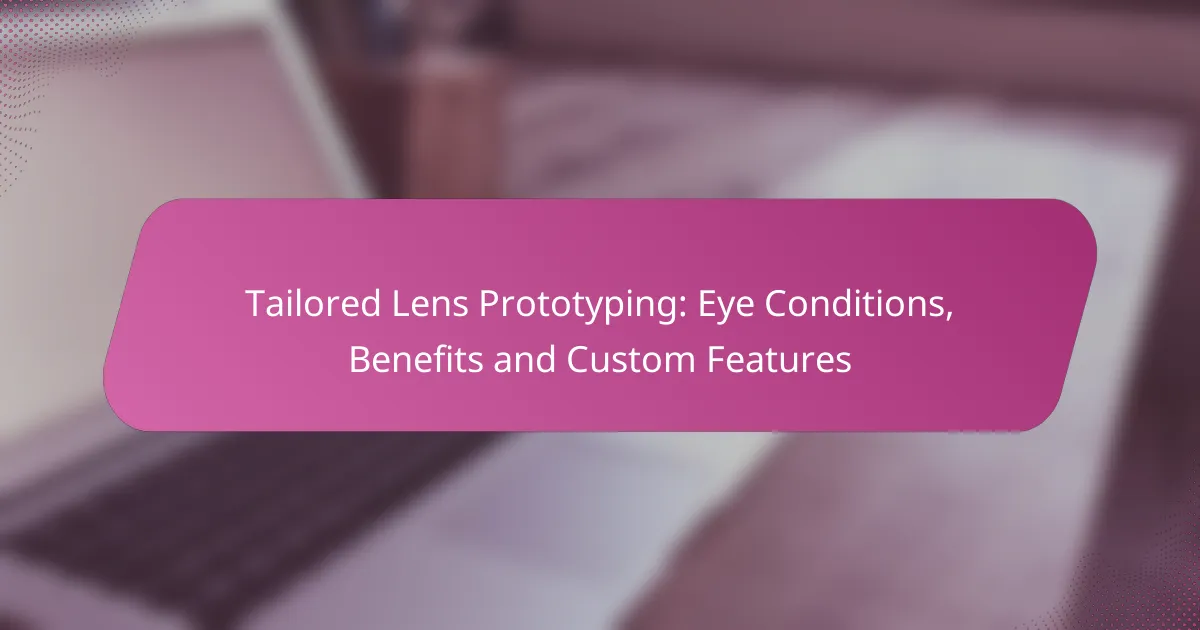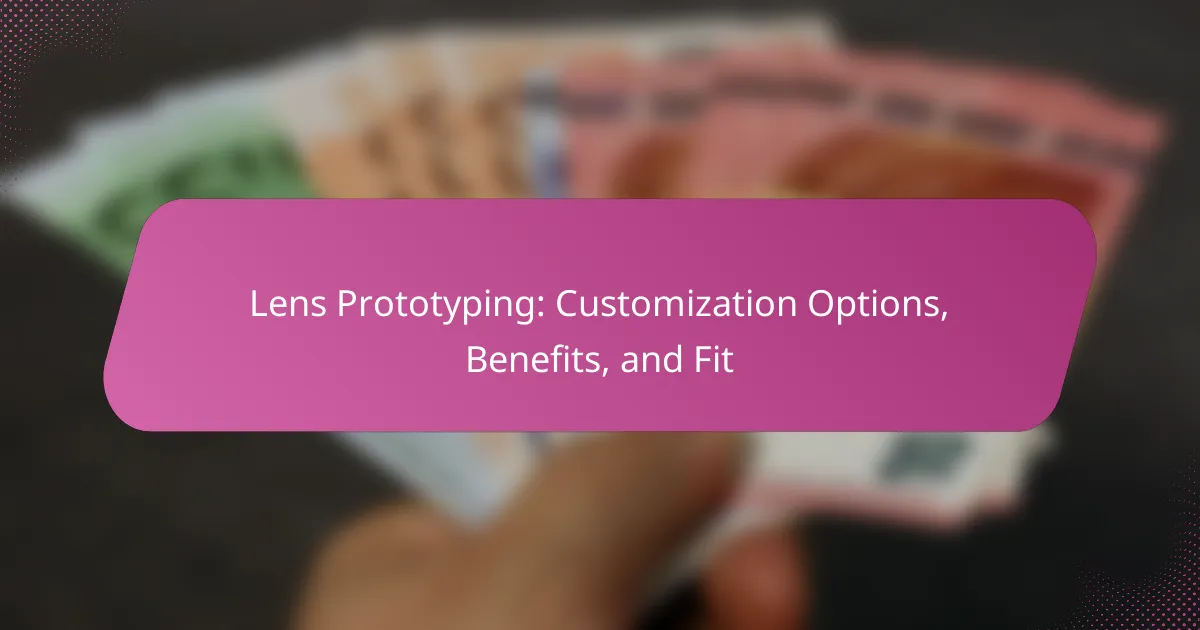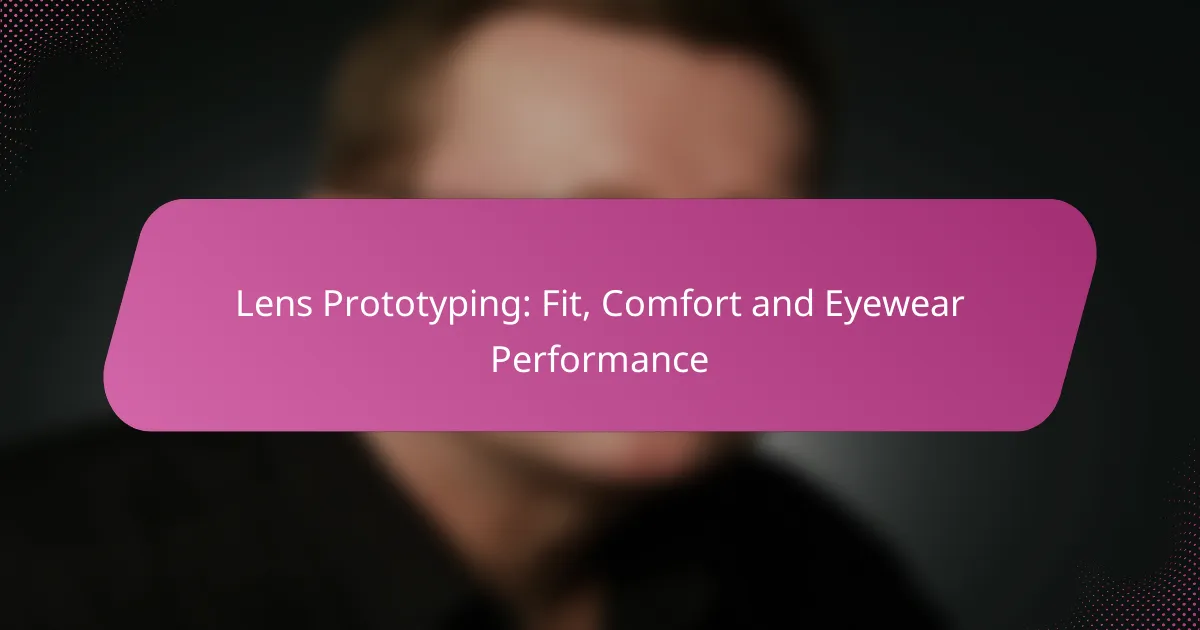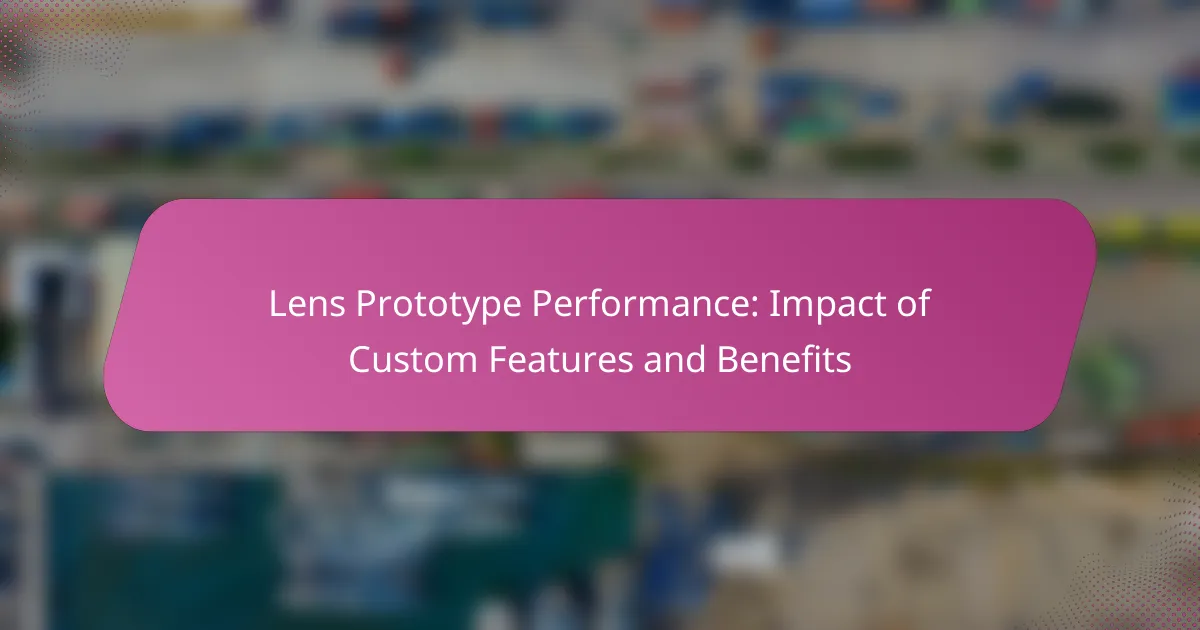Tailored lens prototyping involves the creation of customized optical products specifically designed to address individual eye conditions, enhancing both vision and comfort. By taking into account factors such as prescription, lifestyle, and unique visual needs, these lenses provide significant benefits, including improved clarity and a better overall fit for the wearer.

What are tailored lens solutions for eye conditions?
Tailored lens solutions are customized optical products designed to address specific eye conditions, enhancing vision and comfort for individuals. These lenses are crafted based on the unique visual needs of the wearer, taking into account factors such as prescription, lifestyle, and specific eye conditions.
Custom multifocal lenses
Custom multifocal lenses are designed to provide clear vision at multiple distances, making them ideal for individuals with presbyopia or other vision issues. These lenses can be tailored to the user’s specific prescription and visual requirements, ensuring a seamless transition between near, intermediate, and far vision.
When considering custom multifocal lenses, it’s essential to have a comprehensive eye examination to determine the appropriate design and fitting. Many users find that these lenses reduce eye strain and improve overall visual comfort, particularly for those who frequently switch between tasks like reading and using digital devices.
Specialized lenses for astigmatism
Specialized lenses for astigmatism are designed to correct the irregular curvature of the cornea or lens, which causes blurred vision. These lenses, often referred to as toric lenses, can be customized to match the specific degree and axis of astigmatism, providing sharper vision.
When selecting specialized lenses, it’s important to discuss your lifestyle and visual needs with an eye care professional. Many toric lenses are available in both soft and rigid gas permeable materials, allowing for options that suit various preferences and comfort levels.
Prescription lenses for presbyopia
Prescription lenses for presbyopia are specifically crafted to help individuals who experience difficulty focusing on close objects due to aging. These lenses can be designed as bifocals, trifocals, or progressive lenses, each offering different benefits based on the user’s needs.
Choosing the right type of prescription lens involves considering factors such as the extent of presbyopia and daily activities. Progressive lenses, for example, provide a smooth transition between different vision zones, while bifocals offer distinct sections for distance and near vision. Consulting with an eye care specialist can help identify the most suitable option for optimal visual performance.
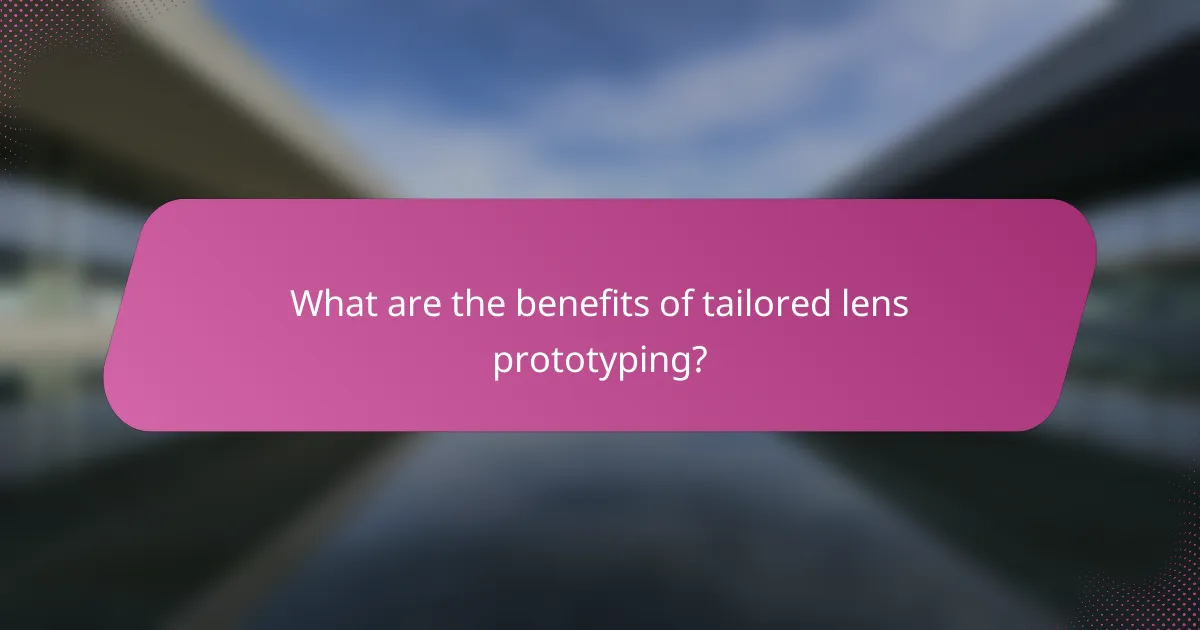
What are the benefits of tailored lens prototyping?
Tailored lens prototyping offers significant advantages, including enhanced visual performance and comfort. By customizing lenses to meet individual eye conditions, users can experience improved clarity and a better overall fit.
Improved visual clarity
Tailored lens prototyping enhances visual clarity by precisely addressing specific refractive errors and eye conditions. Custom lenses can correct issues such as astigmatism, presbyopia, or myopia more effectively than standard lenses.
For example, a tailored lens can be designed to optimize vision at various distances, allowing for seamless transitions between near and far sight. This level of customization can lead to sharper images and reduced visual distortions.
Enhanced comfort and fit
Comfort is a critical factor in lens wear, and tailored lens prototyping ensures a better fit for individual eye shapes and sizes. Custom lenses can minimize discomfort caused by pressure points or improper alignment.
Additionally, tailored lenses can be made from materials that suit the wearer’s lifestyle, such as lightweight or breathable options. This can significantly increase the likelihood of consistent use, reducing the chances of lens fatigue.
Personalized design for individual needs
Each person’s vision needs are unique, and tailored lens prototyping allows for a personalized approach. This process considers factors such as lifestyle, occupation, and specific visual tasks to create lenses that cater to individual requirements.
For instance, someone who spends considerable time on digital devices may benefit from lenses designed to reduce blue light exposure and enhance screen visibility. This level of personalization can lead to improved satisfaction and performance in daily activities.

How does tailored lens prototyping work?
Tailored lens prototyping involves creating custom lenses designed to meet specific visual needs and preferences. This process utilizes advanced technologies to ensure precision and comfort for various eye conditions.
3D printing technology
3D printing technology plays a crucial role in tailored lens prototyping by allowing for rapid production of custom shapes and designs. This method enables manufacturers to create lenses that fit the unique contours of an individual’s face and eyes, enhancing comfort and effectiveness.
With 3D printing, adjustments can be made quickly, reducing the time from design to final product. This flexibility is particularly beneficial for individuals requiring specific modifications due to unique eye conditions.
Digital eye measurement techniques
Digital eye measurement techniques are essential for accurately capturing the unique dimensions of a person’s eyes. These methods often include high-resolution imaging and wavefront technology, which assess how light travels through the eye.
By utilizing these advanced techniques, optometrists can gather precise data that informs the design of tailored lenses. This ensures that the final product addresses specific visual impairments, such as astigmatism or presbyopia, effectively.
Material selection and customization
Material selection is a critical aspect of tailored lens prototyping, as different materials offer varying levels of durability, weight, and optical clarity. Common materials include polycarbonate and high-index plastics, each providing distinct benefits for different visual needs.
Customization options also extend to lens coatings, such as anti-reflective or blue light filtering, which can enhance visual comfort and protection. Choosing the right combination of materials and features is vital for achieving optimal performance and satisfaction with the final lenses.
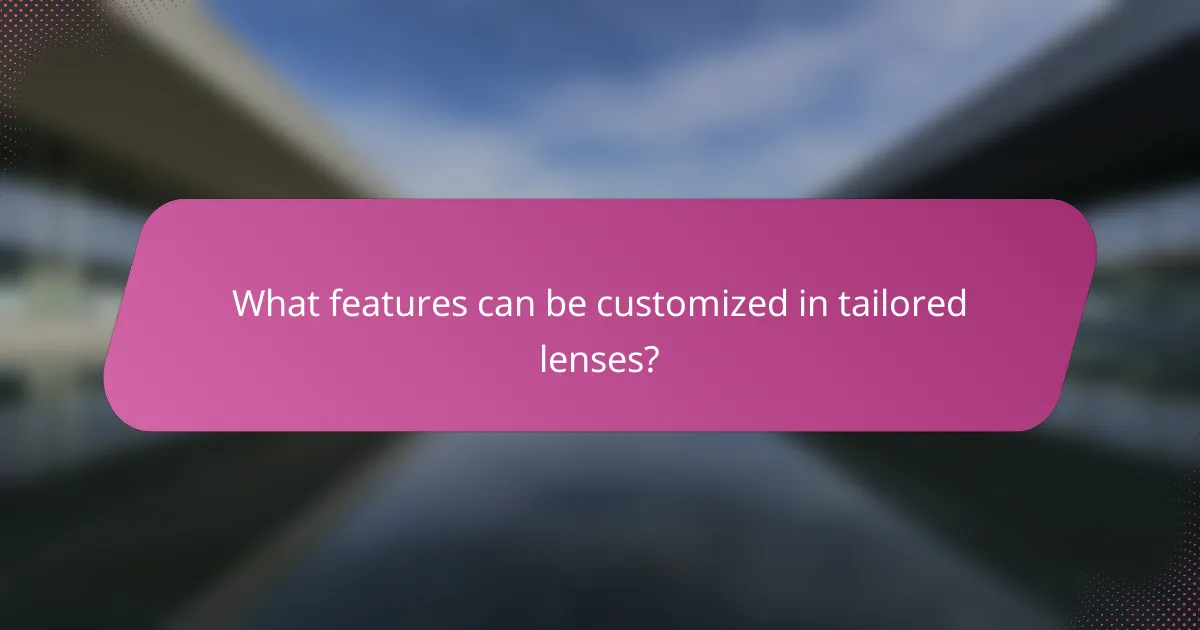
What features can be customized in tailored lenses?
Tailored lenses can be customized in several key areas, including lens shape, curvature, coatings, and color tints. These features are designed to address specific eye conditions and enhance visual comfort and protection.
Lens shape and curvature
Lens shape and curvature are crucial for ensuring optimal vision correction and comfort. Customizing these aspects allows for a better fit to the unique contours of an individual’s face and eyes, which can significantly improve visual clarity.
For example, individuals with astigmatism may benefit from toric lenses that have specific curvatures to correct their vision. It’s important to work with an eye care professional to determine the best shape and curvature based on personal needs.
Coatings for UV protection
Coatings for UV protection are essential for safeguarding the eyes from harmful ultraviolet rays. Tailored lenses can be treated with specialized coatings that block a significant percentage of UV radiation, reducing the risk of cataracts and other eye conditions.
When selecting coatings, consider options such as anti-reflective or polarized coatings, which can enhance visual comfort in bright conditions. Always check that the coatings comply with relevant safety standards to ensure effective protection.
Color tints for specific conditions
Color tints can be customized in tailored lenses to address specific visual needs or conditions. For instance, yellow or amber tints may enhance contrast for individuals with certain visual impairments, while gray tints can reduce glare without distorting colors.
Choosing the right tint involves understanding how different colors affect vision and comfort. Consulting with an eye care professional can help determine the most beneficial tint based on lifestyle and visual requirements.
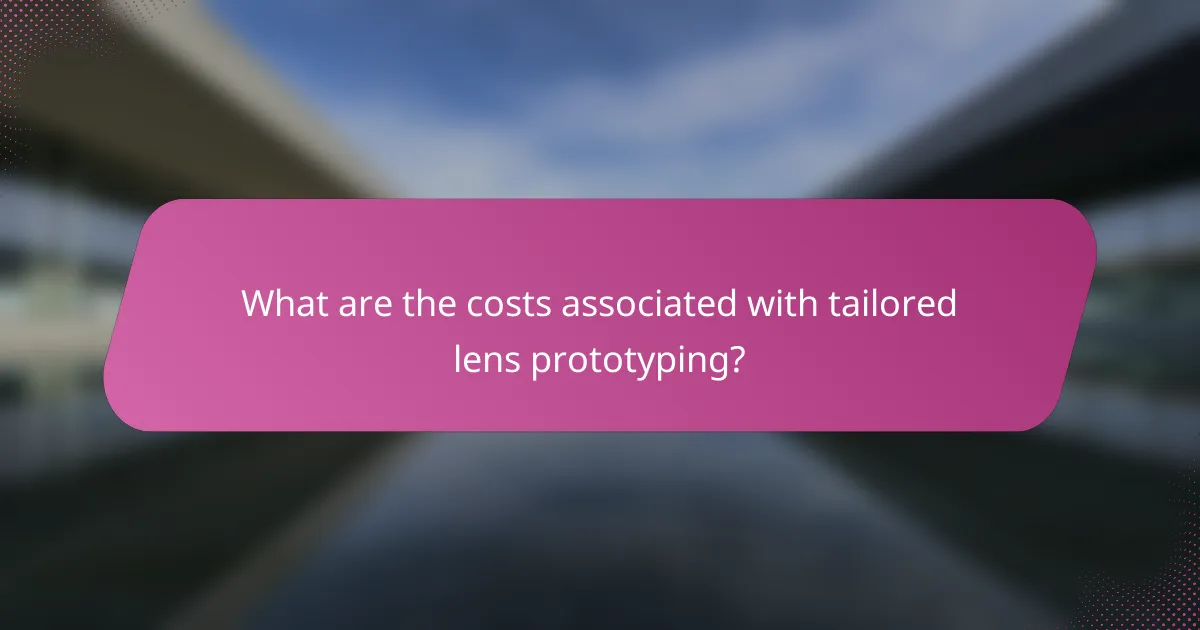
What are the costs associated with tailored lens prototyping?
The costs of tailored lens prototyping can vary significantly based on the complexity of the design, materials used, and specific features required for individual eye conditions. Generally, these costs can range from a few hundred to several thousand dollars, depending on customization levels and the technology involved.
Average pricing for custom lenses
Custom lenses typically range from around $300 to $1,500, depending on factors such as the type of lens, materials, and additional features like anti-reflective coatings or photochromic options. High-end designs for specialized conditions may exceed this range, particularly if advanced technology is used.
For example, lenses designed for specific visual impairments or unique prescriptions often come at a premium. It’s advisable to consult with an eye care professional to get a precise estimate based on individual needs.
Insurance coverage options
Insurance coverage for tailored lens prototyping varies widely among providers and plans. Some insurance policies may cover a portion of the costs, especially if the lenses are deemed medically necessary. However, many plans have specific limitations or exclusions for custom eyewear.
It’s essential to check with your insurance provider to understand your coverage options and any potential out-of-pocket expenses. Some flexible spending accounts (FSAs) or health savings accounts (HSAs) may also be used to offset costs.
Cost comparison with standard lenses
Standard lenses generally cost less than custom lenses, typically ranging from $100 to $300. While standard options may suffice for many users, they often lack the specific adaptations needed for certain eye conditions.
When considering tailored lenses, weigh the benefits of improved vision quality and comfort against the higher costs. In many cases, the investment in custom lenses can lead to better long-term eye health and satisfaction.
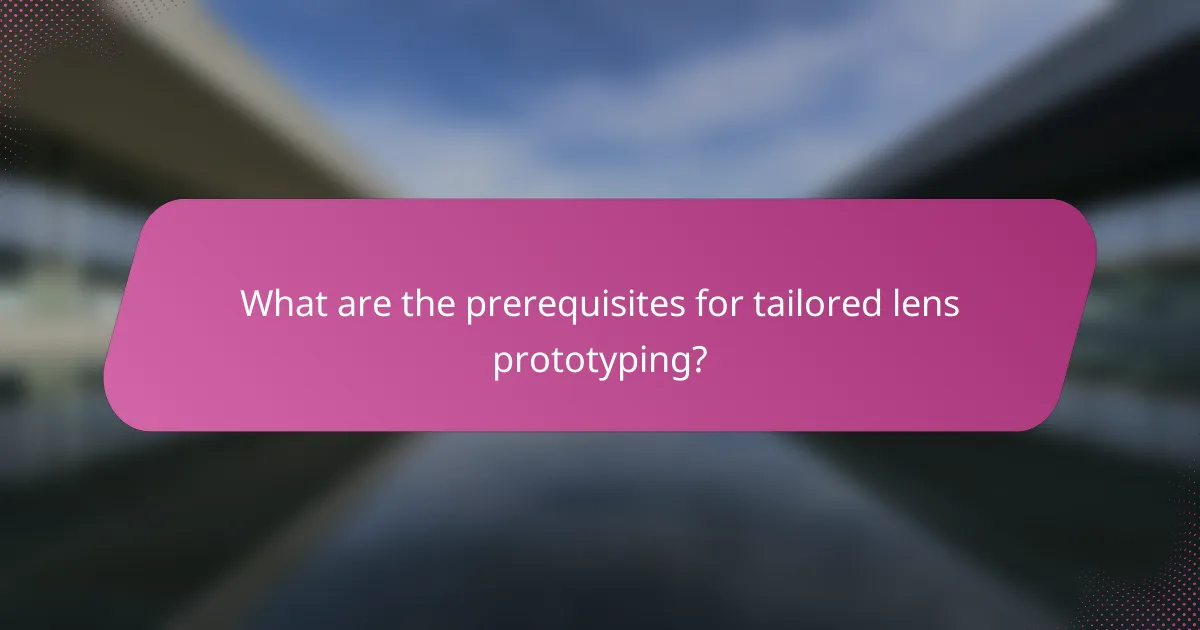
What are the prerequisites for tailored lens prototyping?
Tailored lens prototyping requires a thorough understanding of an individual’s eye health and vision needs. Key prerequisites include a comprehensive eye examination and a consultation with an optometrist to ensure the lenses are customized effectively.
Comprehensive eye examination
A comprehensive eye examination is essential for assessing the overall health of the eyes and identifying specific vision issues. This examination typically includes tests for visual acuity, eye pressure, and the health of the retina and optic nerve.
During the exam, optometrists may use various tools to measure refractive errors and detect conditions such as astigmatism, myopia, or hyperopia. The results from these tests provide critical data that inform the design of tailored lenses.
Consultation with an optometrist
A consultation with an optometrist is crucial for discussing the findings from the eye examination and determining the best approach for tailored lens prototyping. This conversation allows patients to express their specific vision needs, such as preferences for reading, driving, or digital device use.
Optometrists can recommend custom features based on individual lifestyles and visual requirements. They may suggest options like progressive lenses, anti-reflective coatings, or blue light filtering, which can enhance comfort and clarity in various environments.

What are the emerging trends in tailored lens technology?
Emerging trends in tailored lens technology focus on personalized solutions for various eye conditions, enhancing comfort and visual clarity. Innovations include advanced materials, digital customization, and integration with smart technology, allowing for lenses that adapt to individual needs.
Advancements in Materials
New materials are being developed to improve the performance and comfort of tailored lenses. These materials often feature lightweight designs and enhanced durability, which can significantly reduce eye strain and increase wearability. For instance, high-index plastics allow for thinner lenses while maintaining optical clarity.
Digital Customization Techniques
Digital customization techniques enable precise fitting and adjustments based on individual eye measurements. Technologies such as wavefront sensing and corneal topography help create lenses that cater to unique visual requirements, resulting in sharper vision and improved overall satisfaction. Patients can expect a more tailored experience, with adjustments made to address specific refractive errors.
Integration with Smart Technology
Integration with smart technology is becoming increasingly popular in tailored lens solutions. Some lenses now incorporate sensors that can monitor eye health or adjust tint levels based on lighting conditions. This innovation not only enhances user experience but also provides valuable data for eye care professionals, promoting proactive management of eye conditions.
